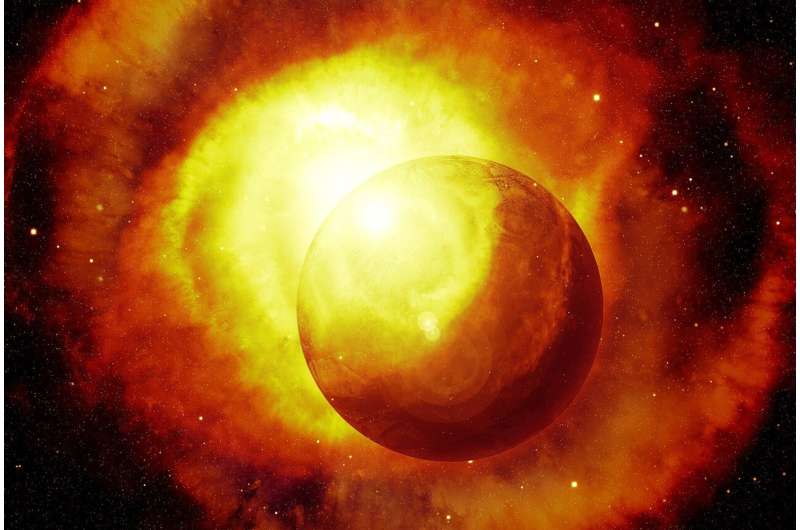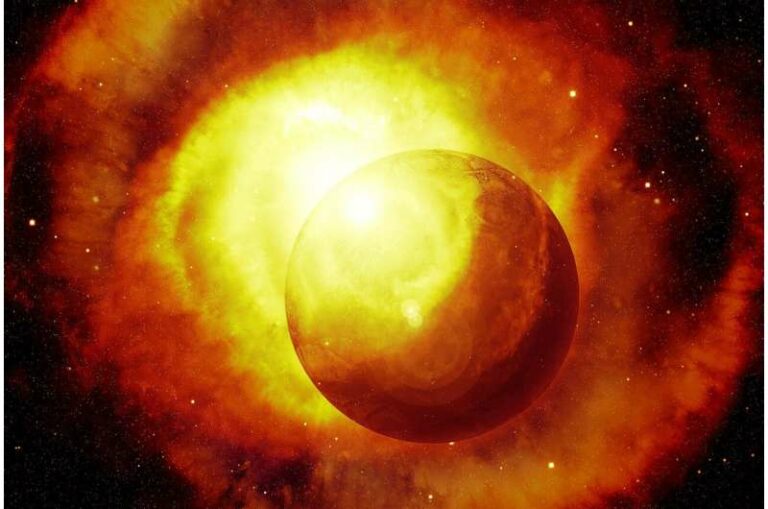Did NASA find Hell? Scientists brace for first glimpse of world that constantly burns
Mankind’s first look at conditions on a “super-Earth” 50 light years away is expected in coming weeks via the James Webb Space Telescope, and NASA is bracing to see the stuff of nightmares.
The planet, called 55 Cancri e, orbits so close to “its Sun-like star” that surface conditions could literally be like the Hell of biblical description: a dimension in a constant state of burning.

Data show 55 Cancri e is less than 1.5 million miles from its star—1/25 the distance super hot Mercury is from our sun, NASA says.
“With surface temperatures far above the melting point of typical rock-forming minerals, the day side of the planet is thought to be covered in oceans of lava,” NASA reported last week.
“Imagine if Earth were much, much closer to the Sun. So close that an entire year lasts only a few hours. So close that gravity has locked one hemisphere in permanent searing daylight and the other in endless darkness. So close that the oceans boil away, rocks begin to melt, and the clouds rain lava.”
Nothing like it exists in our solar system, NASA says.
Among the things the scientists hope to discover is if the planet is “tidally locked, with one side facing the star at all times” or if it rotates in a manner that would create day and night.
Initial views from NASA’s less powerful Spitzer Space Telescope show something mysterious is happening on 55 Cancri e, because the hottest spot is not the part directly facing its star.
One theory is that the planet has “a dynamic atmosphere that moves heat around,” NASA says.
Another idea is that 55 Cancri e rotates to create day and night, but with nightmarish results.
“In this scenario, the surface would heat up, melt, and even vaporize during the day, forming a very thin atmosphere that Webb could detect,” NASA says.
“In the evening, the vapor would cool and condense to form droplets of lava that would rain back to the surface, turning solid again as night falls.”
The James Webb Space Telescope is expected to be fully operational in “just weeks” and its first observations are expected through the summer, NASA says.
The telescope is capable of detecting the presence of an atmosphere, scientists say.
Its first year will be devoted to studying 55 Cancri e and the airless planet LHS 3844 b, to try and understand “the evolution of rocky planets like Earth,” NASA says.
Reference: phys.org
Do not forget to share your opinion with us to provide you with the best posts !




0 Comments